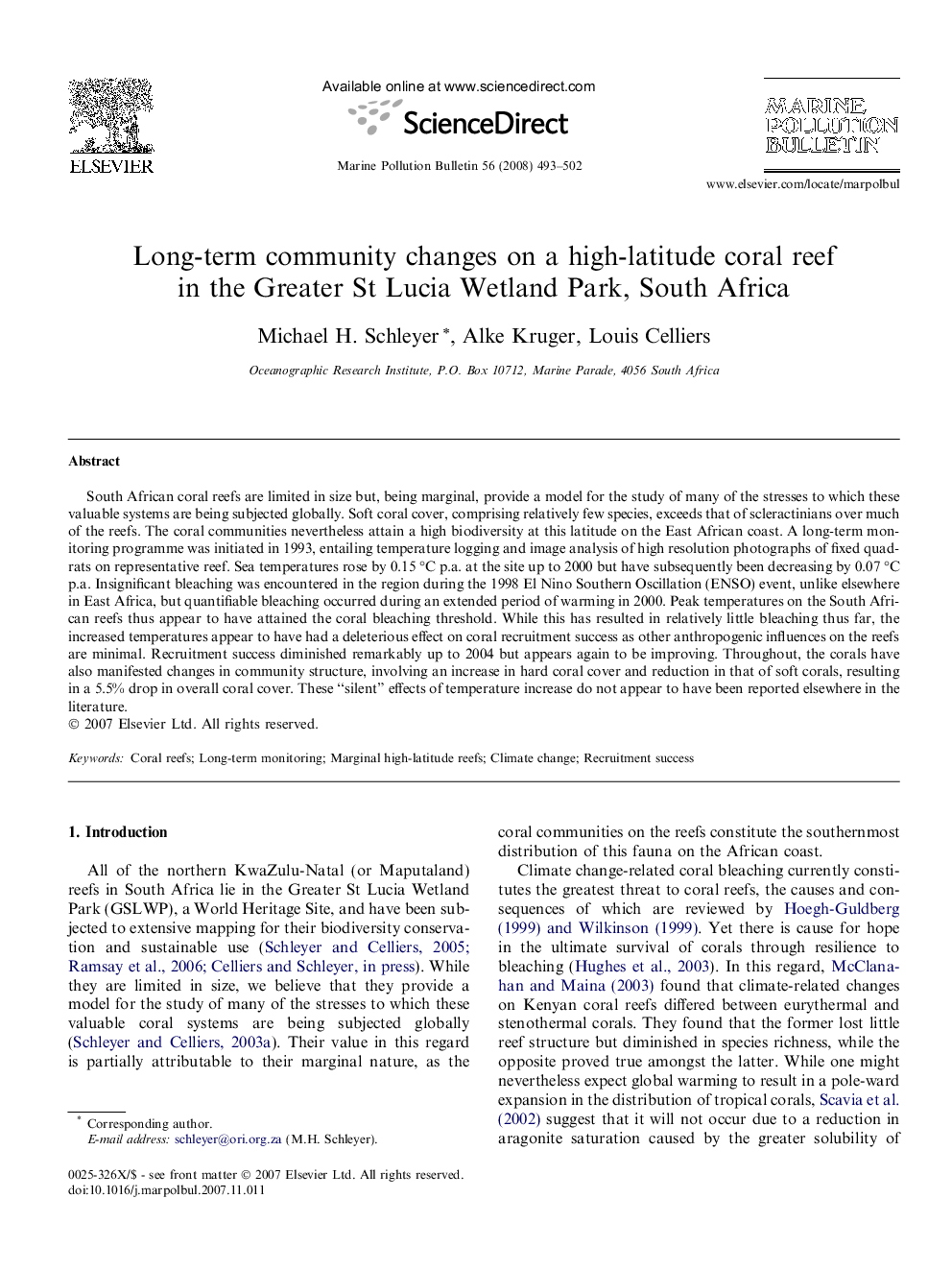| Article ID | Journal | Published Year | Pages | File Type |
|---|---|---|---|---|
| 4477013 | Marine Pollution Bulletin | 2008 | 10 Pages |
South African coral reefs are limited in size but, being marginal, provide a model for the study of many of the stresses to which these valuable systems are being subjected globally. Soft coral cover, comprising relatively few species, exceeds that of scleractinians over much of the reefs. The coral communities nevertheless attain a high biodiversity at this latitude on the East African coast. A long-term monitoring programme was initiated in 1993, entailing temperature logging and image analysis of high resolution photographs of fixed quadrats on representative reef. Sea temperatures rose by 0.15 °C p.a. at the site up to 2000 but have subsequently been decreasing by 0.07 °C p.a. Insignificant bleaching was encountered in the region during the 1998 El Nino Southern Oscillation (ENSO) event, unlike elsewhere in East Africa, but quantifiable bleaching occurred during an extended period of warming in 2000. Peak temperatures on the South African reefs thus appear to have attained the coral bleaching threshold. While this has resulted in relatively little bleaching thus far, the increased temperatures appear to have had a deleterious effect on coral recruitment success as other anthropogenic influences on the reefs are minimal. Recruitment success diminished remarkably up to 2004 but appears again to be improving. Throughout, the corals have also manifested changes in community structure, involving an increase in hard coral cover and reduction in that of soft corals, resulting in a 5.5% drop in overall coral cover. These “silent” effects of temperature increase do not appear to have been reported elsewhere in the literature.
